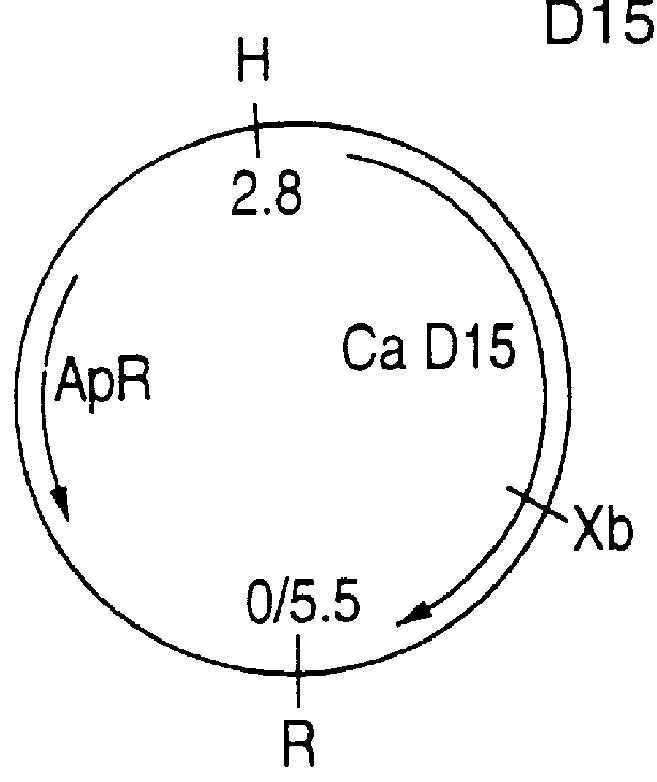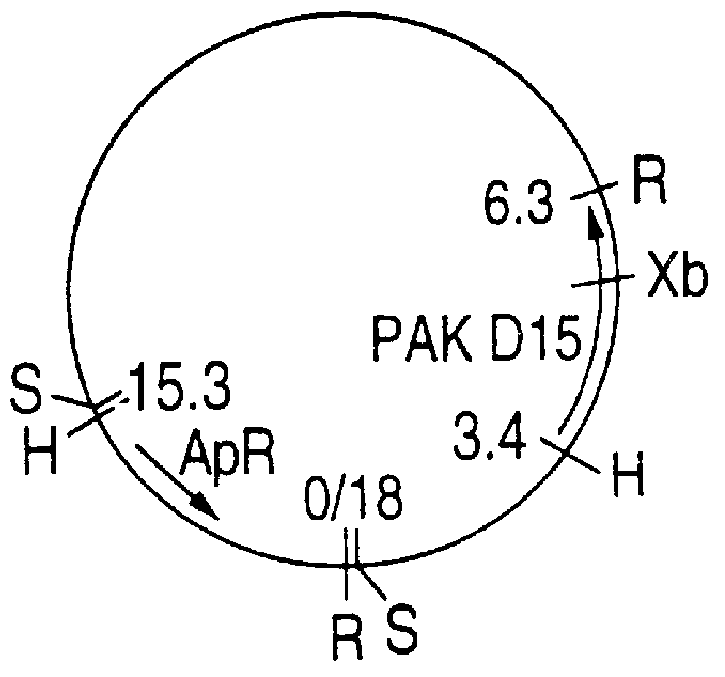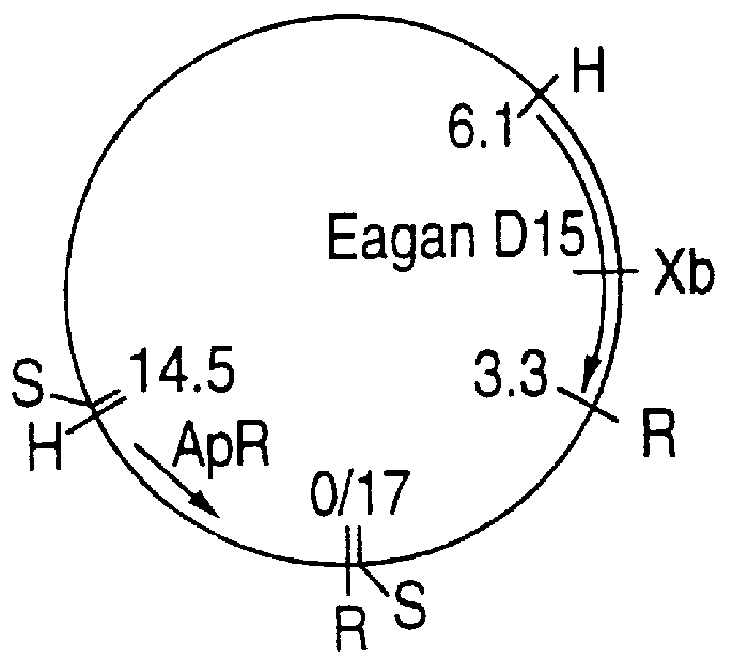Haemophilus outer membrane protein
a technology of outer membrane and haemophilus, which is applied in the direction of viral antigen ingredients, bacterial antigen ingredients, peptide sources, etc., can solve the problems of memory cell increase, booster response or memory cell increase, and achieve enhanced protection against h and higher protectivity
- Summary
- Abstract
- Description
- Claims
- Application Information
AI Technical Summary
Benefits of technology
Problems solved by technology
Method used
Image
Examples
example 1
This Example illustrates the cloning and sequencing of the D15 genes.
Genomic DNA was purified from the Haemophilus influenzae type b strain Ca by lysis of the bacteria with pronase and sodium dodecylsulphate followed by phenol extraction and isopropanol precipitation, according to Berns and Thomas, 1965. The DNA was then partially digested with EcoRI and the DNA fraction containing 6-10 kb fragments was isolated following electrophoresis in low-melting point agarose. These fragments were ligated into a lambda gt11 Ampl vector (Thomas and Rossi, 1986) and cloned as a lysogen into E. coli strain BTA282. Recombinant clones were selected for their ampicillin resistance conferred by the vector. To identify clones producing H. influenzae type b antigen, the clones were replica-plated on nitrocellulose filters and duplicate colonies induced for expression by temperature switch to 42.degree. C. for 2 hours. Colonies were lysed by wetting the filters with 1% sodium dodecylsulphate (SDS). The...
example 2
This Example illustrates the preparation of chromosomal DNA from Haemophilus influenzae strains Eagan, MinnA, SB33, and PAK 12085.
H. influenzae strains were grown on Mueller-Hinton agar or in brain heart infusion broth as described by Harkness et al., 1992.
Eagan chromosomal DNA
Bacteria from 50 mL of culture were pelleted by centrifugation at 5,000 rpm, 20 minutes, 4.degree. C. The pellet was resuspended in 25 mL TE (10 mM Tris, 1 mM EDTA, pH 8.0) and 2.times.5 mL aliquots used for chromosomal DNA preparation. To each aliquot were added 0.6 mL of 10% sarkosyl and 0.15 mL of 20 mg / mL proteinase K and the samples incubated at 37.degree. C. for 1 hour. The lysate was extracted once with Tris-saturated phenol (pH 8.0) and three times with chloroform:isoamyl alcohol (24:1). The aqueous phase was pooled for a final volume of 7 mL. Then, 0.7 mL of 3M sodium acetate (pH 5.2) and 4.3 mL of isopropanol were added to precipitate the DNA which was spooled, rinsed with 70% ethanol, dried, and res...
example 3
This Example illustrates the preparation of Haemophilus influenzae chromosomal libraries.
H. influenzae Eagan and PAK 12085 chromosomal DNAs were digested with Sau3A I (0.5 unit / 10 .mu.g DNA) at 37.degree. C. for 15 minutes and size-fractionated by agarose gel electrophoresis. Gel slices corresponding to DNA fragments of 15-23 kb were excised and DNA was electroeluted overnight in dialysis tubing containing 3 mL of TAE (40 mM Tris-acetate, 1 mM EDTA, pH 8.0) at 14 V. The DNA was precipitated twice and resuspended in water before overnight ligation with EMBL3 BamH I arms (Promega). The ligation mixture was packaged using the Lambda in vitro packaging kit (Amersham) according to the manufacturer's instructions and plated onto E. coli NM539 cells. The library was titrated, then amplified and stored at 4.degree. C. under 0.3% chloroform.
MinnA chromosomal DNA (10 .mu.g) was digested with Sau3A I (40 units) for 2, 4, and 6 minutes then size-fractionated on a 10-30% sucrose gradient in TNE ...
PUM
| Property | Measurement | Unit |
|---|---|---|
| Atomic weight | aaaaa | aaaaa |
| Volume | aaaaa | aaaaa |
| Mass | aaaaa | aaaaa |
Abstract
Description
Claims
Application Information
 Login to View More
Login to View More - R&D
- Intellectual Property
- Life Sciences
- Materials
- Tech Scout
- Unparalleled Data Quality
- Higher Quality Content
- 60% Fewer Hallucinations
Browse by: Latest US Patents, China's latest patents, Technical Efficacy Thesaurus, Application Domain, Technology Topic, Popular Technical Reports.
© 2025 PatSnap. All rights reserved.Legal|Privacy policy|Modern Slavery Act Transparency Statement|Sitemap|About US| Contact US: help@patsnap.com



